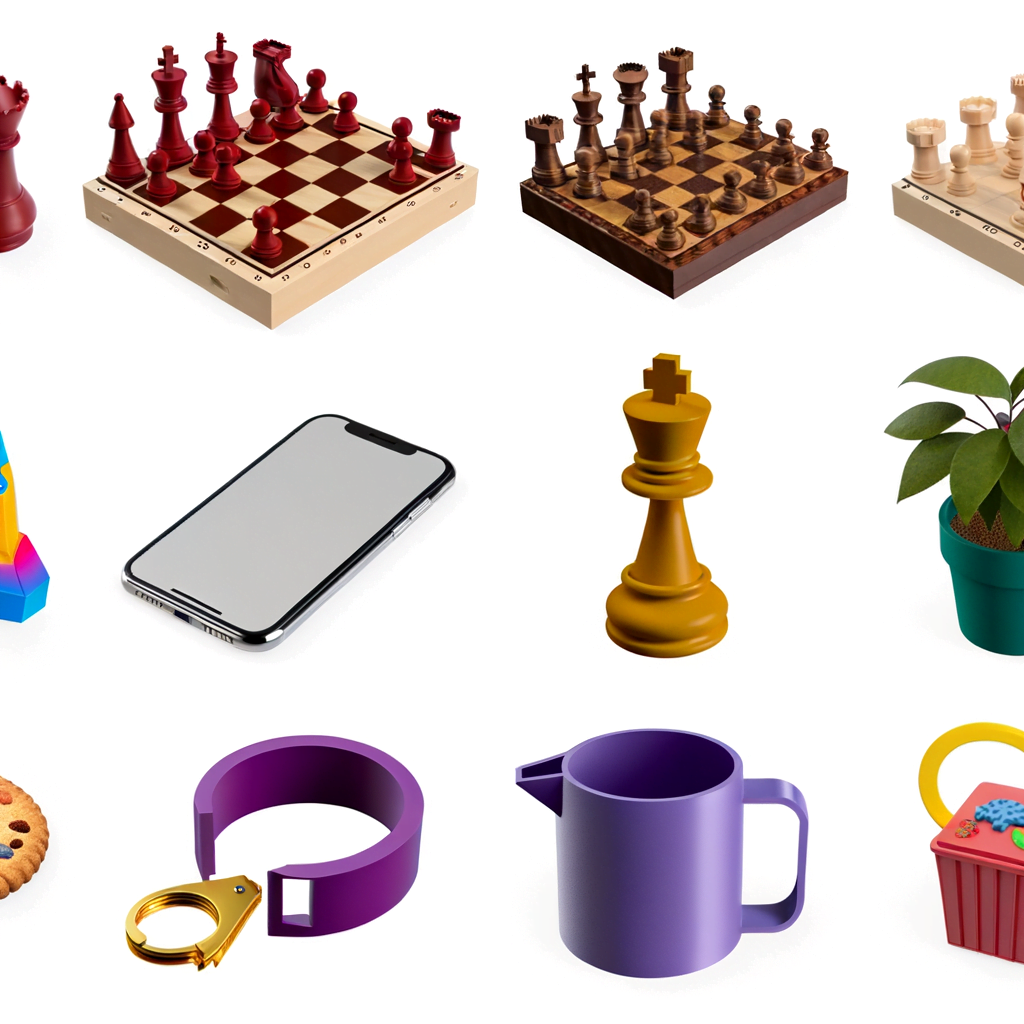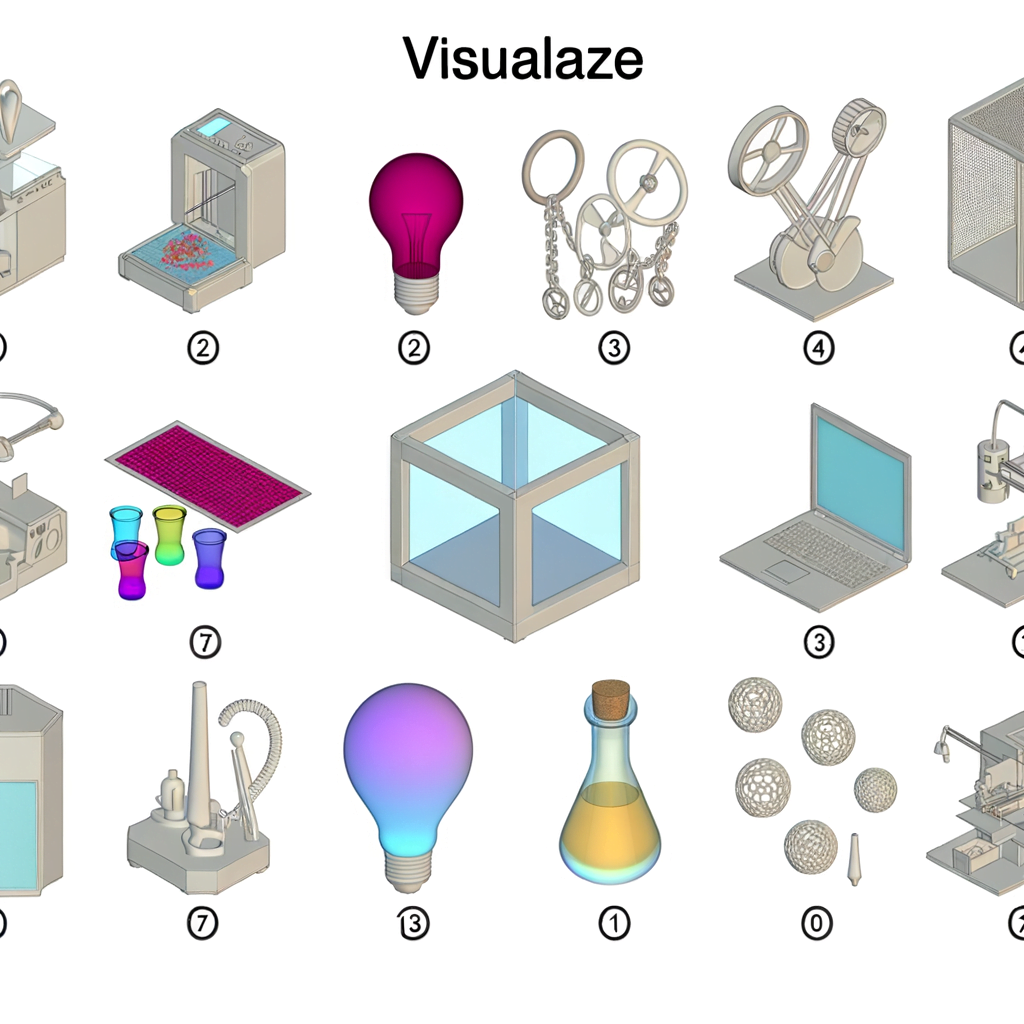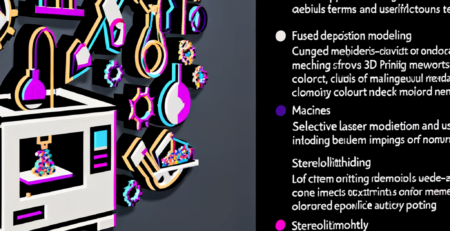Successful 3D Printed Projects – 10 Ideas Anyone Can Make
Sommario
“Unleash Creativity: 10 3D Printed Masterpieces for DIY Enthusiasts”
3D printing technology has revolutionized the way we create and manufacture objects, offering unparalleled flexibility and customization. From practical household items to intricate art pieces, the possibilities are endless. Here are 10 successful 3D printed project ideas that anyone can make, showcasing the versatility and accessibility of 3D printing for hobbyists, entrepreneurs, and innovators alike. Whether you’re a beginner looking to dip your toes into the world of 3D printing or an experienced maker seeking new challenges, these ideas can serve as inspiration for your next project.
Innovative Home Decor: Transforming Living Spaces with 3D Printing
Successful 3D Printed Projects – 10 Ideas Anyone Can Make
Innovative Home Decor: Transforming Living Spaces with 3D Printing
The advent of 3D printing technology has revolutionized the way we create and customize objects, including home decor. This technology allows anyone with access to a 3D printer to produce intricate designs that were once the domain of skilled artisans. Here are ten successful 3D printed projects that can add a personal touch to any living space, demonstrating the versatility and potential of 3D printing in home decoration.
Firstly, one of the most popular 3D printed items for home decor is the vase. With countless designs available online, individuals can print vases in various shapes and sizes to match their interior design. These can range from geometric patterns to organic forms, each bringing a unique aesthetic to a room. Moreover, by using different colors or finishes, these vases can be tailored to complement existing furnishings.
Another idea is to create custom light fixtures. 3D printing enables the production of complex lampshades that cast mesmerizing shadows and patterns across a room. These can be designed to fit existing light fittings, allowing for a seamless integration into the home. The ability to print translucent materials also opens up possibilities for soft, ambient lighting that enhances the mood of a space.
Wall art is another realm where 3D printing shines. Intricate wall hangings or three-dimensional sculptures can be printed to serve as focal points in a room. These pieces can be as abstract or as realistic as desired, and they offer a modern twist on traditional wall decorations. Additionally, they can be easily mounted and replaced, offering flexibility for those who like to frequently update their decor.
Functional items such as coasters, curtain tiebacks, and doorstops can also be 3D printed. These small but essential items can be customized to reflect personal style or to fit a particular theme within the home. For instance, a set of coasters with a specific motif can tie together the visual elements of a living room or dining area.
For those with a green thumb, 3D printed planters are a great project. They can be designed with self-watering systems or to fit specific spaces, such as window sills or balcony railings. The customization options are virtually limitless, allowing for a harmonious blend of nature and technology in the home.
Book lovers can benefit from 3D printed bookends that keep their collections organized and add a decorative touch to bookshelves. These can be modeled after anything from animals to architectural structures, adding character and interest to a study or living room.
In the kitchen, 3D printed utensil holders and spice racks can help maintain organization while adding a personal touch. These items can be designed to fit specific drawer dimensions or countertop spaces, making the most of the available area.
For a more interactive decor element, 3D printed puzzles and games can serve as both entertainment and conversation pieces. These can be complex mechanical puzzles or simple board games, all of which can be displayed when not in use, adding a playful element to the home.
Clocks are another functional decor item that can be 3D printed. With the ability to customize every component, from the hands to the numbers, individuals can create timepieces that are truly one-of-a-kind.
Lastly, for those looking to add a futuristic touch to their home, 3D printed smart home device holders and stands can integrate technology seamlessly into the living space. These holders can be designed to fit specific devices, ensuring they blend in with the home’s aesthetic while keeping technology accessible.
In conclusion, 3D printing offers a wealth of opportunities for creating unique and personalized home decor. From vases to puzzles, the possibilities are endless, allowing anyone to transform their living space into a reflection of their individual style and creativity. As 3D printing technology continues to evolve, it is likely that even more innovative home decor projects will emerge, further expanding the horizons of personalized interior design.
Personalized Gadgets and Tools: Custom Creations with 3D Printing

Successful 3D Printed Projects – 10 Ideas Anyone Can Make
The advent of 3D printing technology has revolutionized the way we create and customize objects. From the comfort of one’s home, it is now possible to design and fabricate personalized gadgets and tools that cater to individual needs and preferences. This transformative ability to turn digital models into physical realities has opened up a world of possibilities for hobbyists, entrepreneurs, and DIY enthusiasts alike. Here are ten successful 3D printed project ideas that anyone can make, demonstrating the versatility and accessibility of custom creations with 3D printing.
Firstly, one of the most popular 3D printed items is the smartphone case. With the capability to tailor designs to fit any phone model, users can create cases that reflect their personal style while adding features such as extra grip, card holders, or even stands. This level of customization ensures that the end product is not only unique but also functional.
Moving on, another practical application of 3D printing is the creation of custom keychains. These can range from simple name tags to intricate designs that serve as a reflection of one’s personality or interests. The durability of 3D printed materials means these keychains can withstand daily wear and tear, making them both a stylish and sturdy accessory.
Furthermore, for those who enjoy board games, 3D printing offers the opportunity to create bespoke game pieces. Whether replacing lost parts or inventing entirely new games, the precision of 3D printing ensures that each piece fits perfectly into the gaming experience. This can elevate game nights to a new level of personalization and fun.
In addition, camera enthusiasts can benefit from 3D printed lens caps and camera mounts. These items are often specific to the camera model and can be expensive to replace. By 3D printing these accessories, photographers can save money and customize them to their shooting style, such as adding quick-release mechanisms or personalized branding.
Moreover, the world of music has not been left untouched by 3D printing. Guitar picks, for instance, can be printed in various thicknesses and shapes to suit the guitarist’s playing style. This allows for a level of customization that is not readily available in standard music stores.
Another area where 3D printing shines is in the creation of educational tools. Custom puzzles and learning aids can be designed to assist with a wide range of subjects, from complex geometry to language learning. These tools can be tailored to the learner’s pace and level of understanding, making education more engaging and effective.
For the culinary enthusiasts, 3D printed cookie cutters offer a way to turn baking into an expression of creativity. From custom shapes for special occasions to logos and characters, these cookie cutters can make baking a more personalized and enjoyable experience.
Additionally, fitness buffs can create ergonomic grips for workout equipment. These can be designed to fit individual hand sizes and grip preferences, potentially improving comfort and performance during exercise routines.
In the realm of office supplies, pen holders and desk organizers can be 3D printed to keep workspaces tidy and efficient. These can be designed to fit specific desk layouts and to hold the exact items used daily, ensuring that everything has its place.
Lastly, for those with a green thumb, 3D printed planters can add a touch of personality to any garden or home. These can be designed with intricate patterns or to fit into unusual spaces, making gardening more versatile and visually appealing.
In conclusion, 3D printing offers an incredible array of opportunities for personalization across various aspects of life. From practical tools to playful accessories, the ideas listed above are just a starting point for anyone looking to explore the potential of custom creations with 3D printing. As the technology continues to evolve, the possibilities for personalized gadgets and tools will only expand, making it an exciting time for creators and innovators around the world.
Educational Models and Props: Enhancing Learning through 3D Printed Materials
Successful 3D Printed Projects – 10 Ideas Anyone Can Make
In the realm of education, the integration of 3D printed materials has revolutionized the way students interact with complex concepts and abstract ideas. By transforming digital models into tangible objects, educators and learners alike can explore a myriad of subjects with an unprecedented level of engagement. This article delves into ten innovative ideas for 3D printed projects that can significantly enhance the learning experience.
Firstly, anatomical models are a quintessential example of 3D printing’s utility in education. These precise replicas of human and animal organs, bones, and systems allow students to examine the intricacies of biology without the need for actual specimens. Such models are not only cost-effective but also provide a hands-on approach to understanding the structure and function of living organisms.
Moreover, topographical maps created through 3D printing offer a tactile method to study geography and earth sciences. Students can physically feel the contours of mountain ranges, valleys, and plateaus, fostering a deeper comprehension of the planet’s diverse landscapes. These models can also be instrumental in visualizing the effects of environmental changes and natural disasters.
In the field of chemistry, molecular models printed in 3D serve as an invaluable tool for visualizing the bonds and structures of different compounds. By manipulating these models, students can better grasp the three-dimensional nature of molecules, which is often a challenging concept to convey through two-dimensional diagrams.
Additionally, historical artifacts reproduced with 3D printing technology can bring history to life in the classroom. Students can handle replicas of ancient tools, coins, and sculptures, providing a tangible connection to past civilizations and cultures. This hands-on approach can ignite a passion for history and archaeology among young learners.
Furthermore, astronomical models are another area where 3D printing shines. By creating scale models of planets, moons, and spacecraft, educators can demystify the vastness of space and the complexities of celestial mechanics. These models can be particularly effective when explaining concepts such as planetary orbits, phases of the moon, and the solar system’s structure.
In the study of mathematics, geometric shapes and complex mathematical models can be 3D printed to support a more interactive learning process. Students can explore the properties of different shapes, such as surface area and volume, in a more intuitive and engaging manner.
For engineering and physics, 3D printed prototypes of machines and structures allow students to experiment with design principles and the laws of motion. These projects can range from simple levers and pulleys to intricate bridges and towers, providing a foundation for understanding mechanical and structural engineering concepts.
In the realm of robotics and computer science, 3D printing enables students to design and build their own robots or components. This hands-on experience is invaluable for learning about electronics, programming, and the integration of hardware and software.
Environmental science can also benefit from 3D printed models, such as coral reefs or forest ecosystems, to study biodiversity and the interdependence of species. These models can serve as a visual aid for discussions on conservation and environmental protection.
Lastly, custom puzzles and educational games created with 3D printing can make learning fun and interactive. These can be tailored to any subject, from language arts to social studies, and can be designed to challenge students’ problem-solving skills and creativity.
In conclusion, the potential of 3D printed materials in education is vast and continually expanding. These ten ideas represent just a fraction of the possibilities for enhancing learning through 3D printed projects. As technology advances, educators have an ever-growing toolkit to inspire and educate the next generation of learners.
Conclusione
Conclusione:
Successful 3D printed projects demonstrate the versatility and accessibility of 3D printing technology. From practical household items to intricate models, personalized gifts, and educational tools, these projects showcase the ability for anyone to bring their ideas to life. With the right equipment and some creativity, individuals can create unique and functional objects that cater to their specific needs or interests. The success of these projects encourages innovation and may inspire others to explore the potential of 3D printing, regardless of their level of expertise.



Lascia un commento